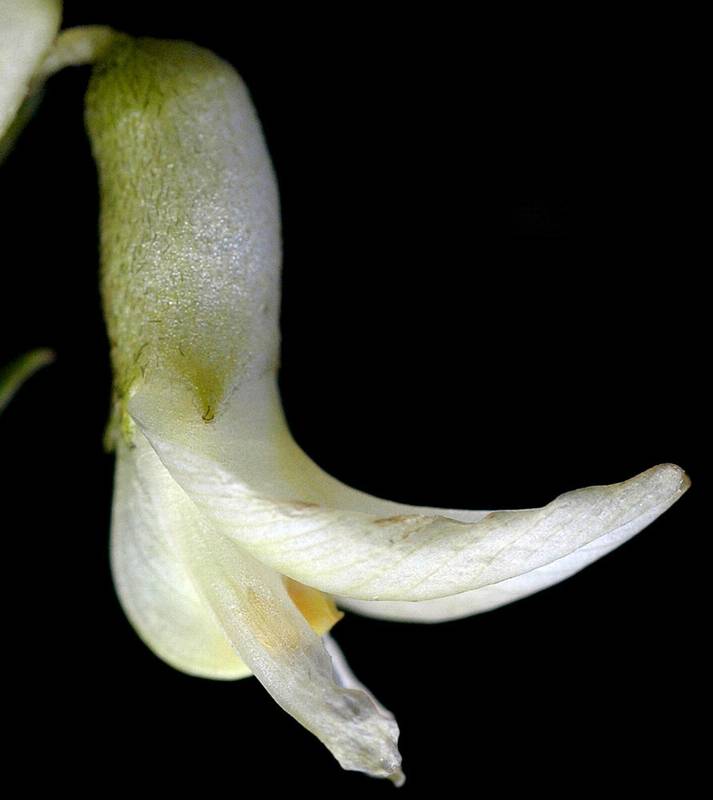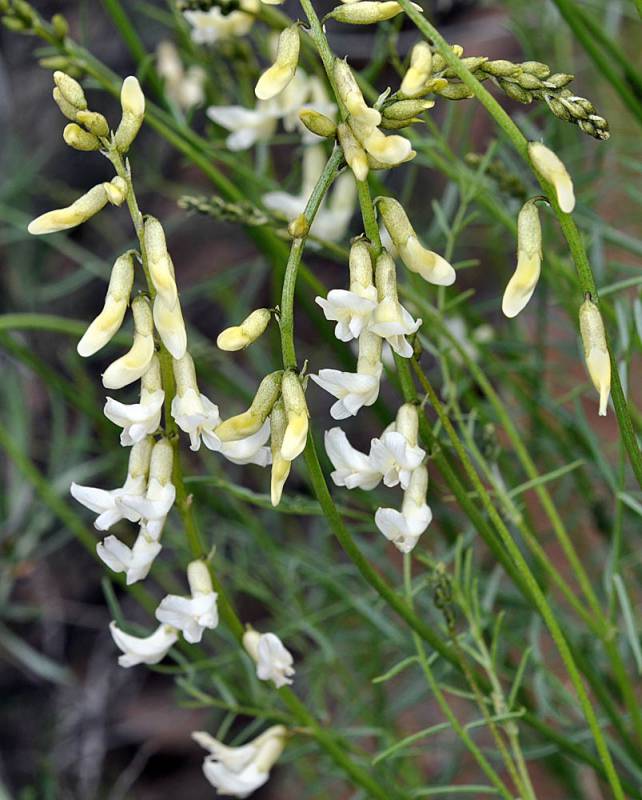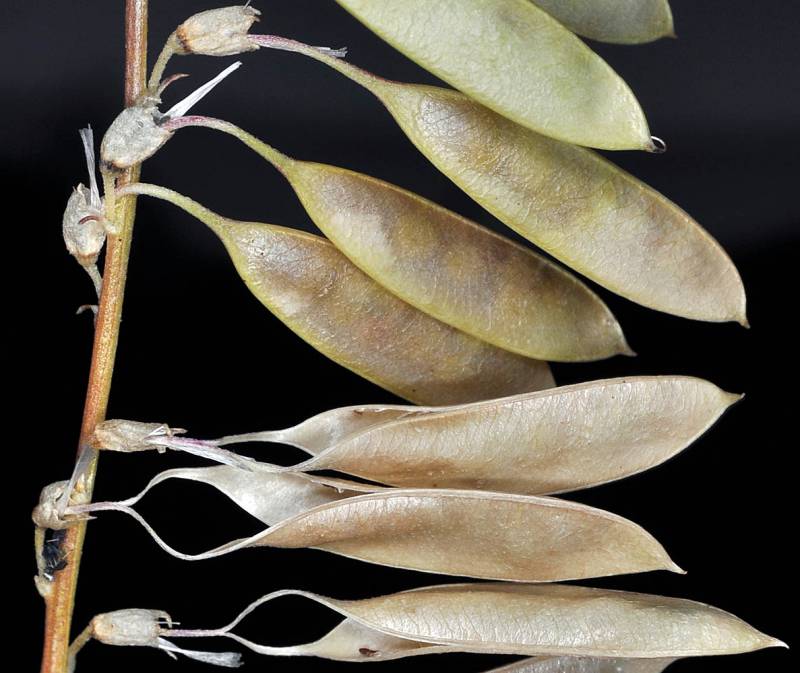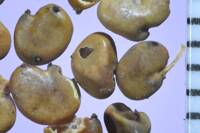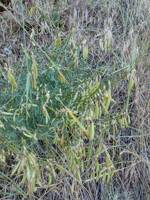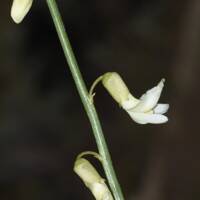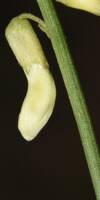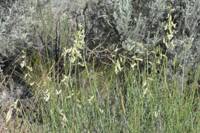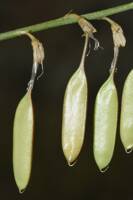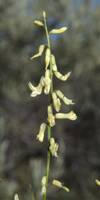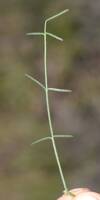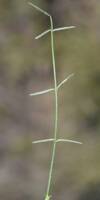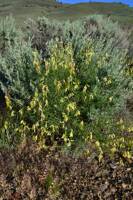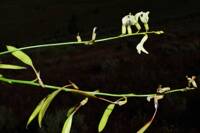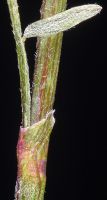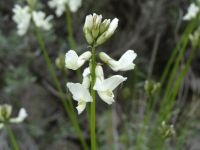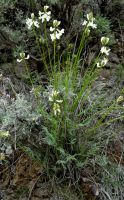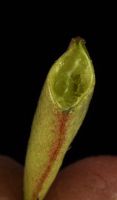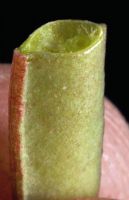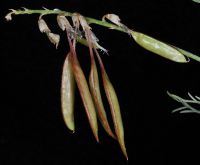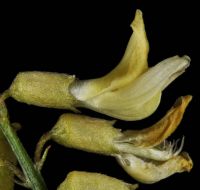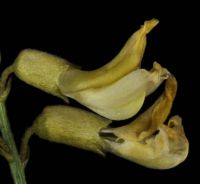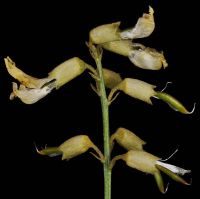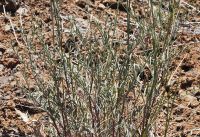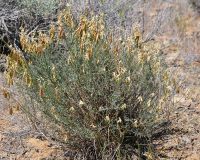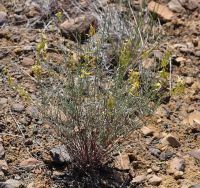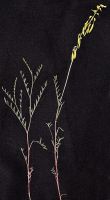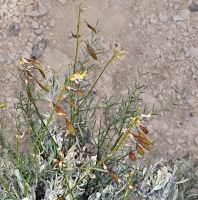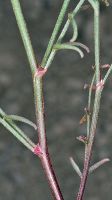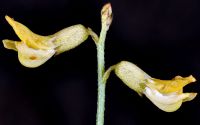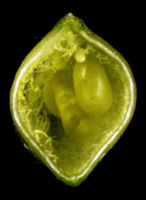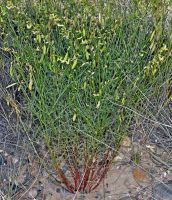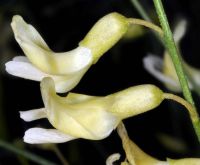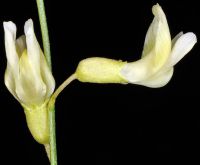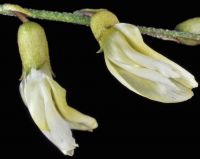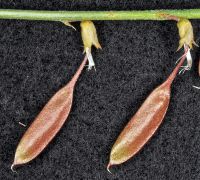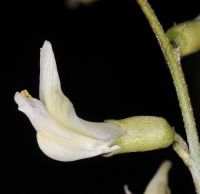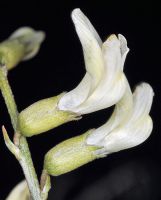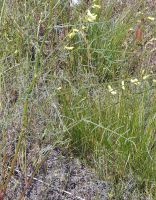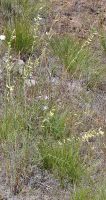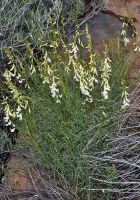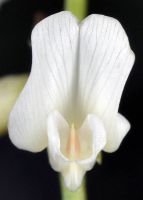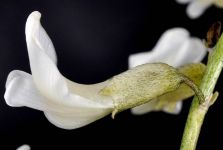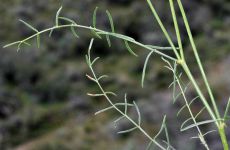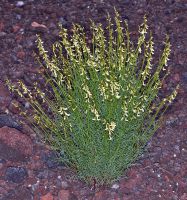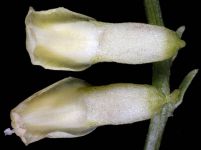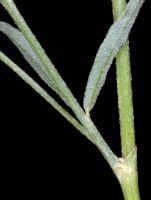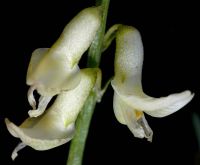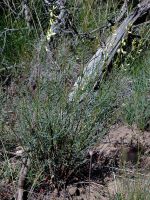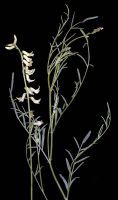Distribution: Occurring east of the Cascades crest in Washington; British Columbia to northeast California, east to Nevada and Idaho.
Habitat: Sagebrush plains and lower foothills.
Flowers: May-June
Origin: Native
Growth Duration: Perennial
Conservation Status: Not of concern
Pollination: Bumblebees, bees, butterflies
Greenish perennial from a taproot and branched crown, the numerous, erect, slender stems 3-9 dm. tall.
Leaves alternate, pinnate, 5-10 cm. long; leaflets 9-25, linear-oblanceolate, 7-20 mm. long and 1-2 mm. wide; stipules triangular, 1-3 mm. long, united below and free above.
Inflorescence of laxly 10- to 30-flowered racemes on peduncles up to 2 dm. long, exceeding the leaves; pedicles slender, 2-6 mm. long; flowers pea-like, cream colored, 9-13 mm. long, spreading to pendant; calyx blackish, 4-6 mm. long, the 5 teeth under 1 mm. long; banner erect; wings rounded, shorter than the banner but 1-4 mm. longer than the slightly beaked keel; stamens 10.
Pod spreading to pendulous, with a slender stipe 10-15 mm. long, the body membranous, greenish, usually glabrous, linear to oblong-elliptic in outline, 15-35 mm. long and 4-6 mm. wide, strongly compressed, elliptic in cross section, 1-celled.
Publication: Proc. Amer. Acad. Arts 6: 226. 1864.
Astragalus macgregorii (Rydb.) Tidestr.
Astragalus stenophyllus Torr. & A. Gray
Astragalus stenophyllus Torr. & A. Gray var. filipes (Torr. ex A. Gray) Tidestr.
PNW Herbaria: Specimen records of Astragalus filipes in the Consortium of Pacific Northwest Herbaria database
WA Flora Checklist: Astragalus filipes checklist entry
OregonFlora: Astragalus filipes information
E-Flora BC: Astragalus filipes atlas page
CalPhotos: Astragalus filipes photos

